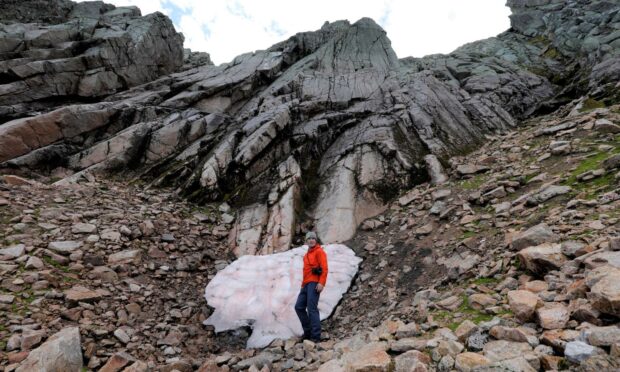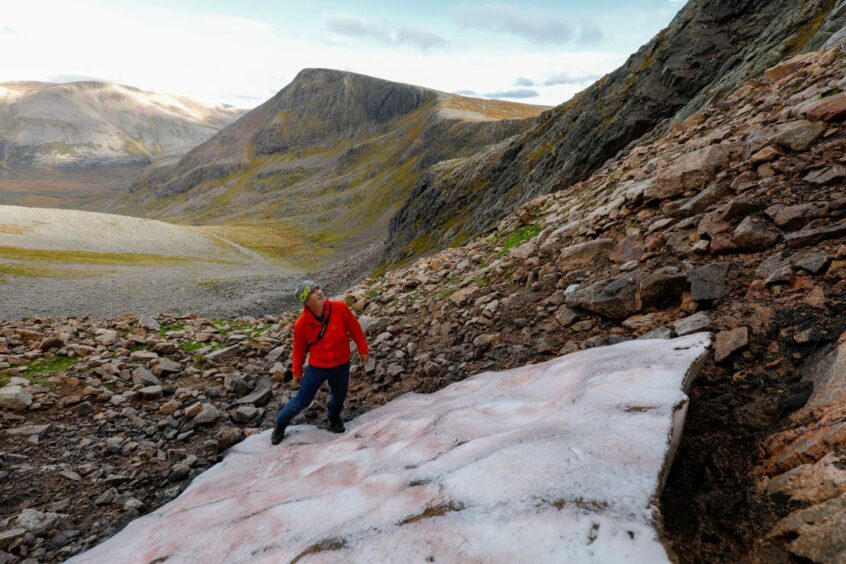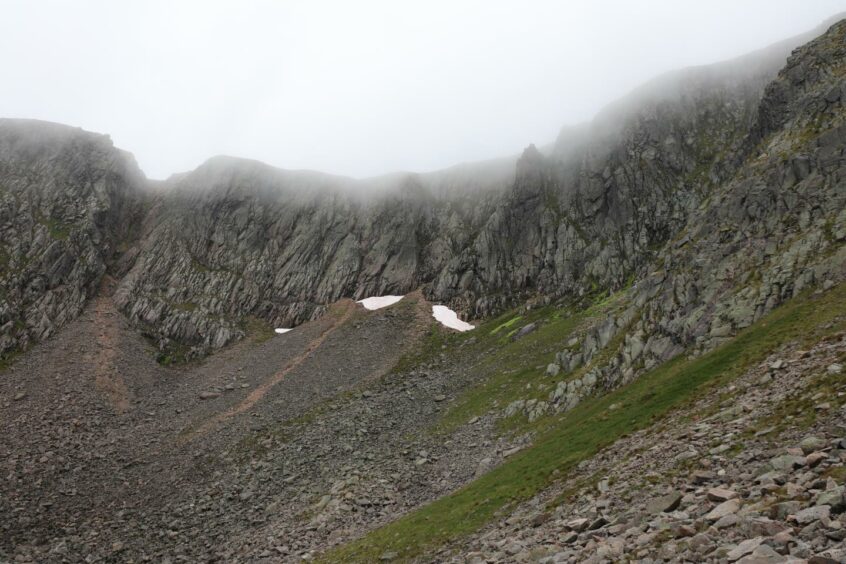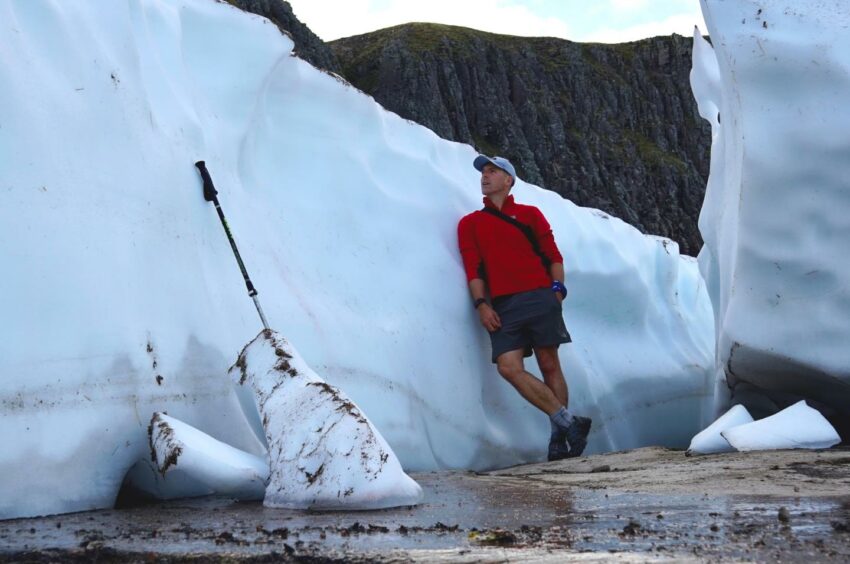The Sphinx is the closest Scotland comes to having a glacier.
Its presence originally dates back to the last Ice Age, but this year it has almost completely melted.
According to mountaineer and author Iain Cameron, it’s unlikely to survive the week.
What is a snow patch?
Scotland does not have glaciers but usually, each year, a number of hardy patches of snow survive through the summer until the first flurries of snow arrive in winter.
There are a number of such patches across Scotland, mostly on Ben Nevis and in the Cairngorms.
Some have been known to melt fairly frequently. The Sphinx in the Cairngorms however is the most famous of them all, having melted just seven times in the last 300 years.
But experts are worried that its permanent demise may be imminent as Iain, Scotland’s leading snow patch expert, points out that four of its disappearances have been within the last 20 years.
The U.K.'s most durable patch of snow, Braeriach's 'The Sphinx', is now critically small. At just 4 metres long, it will melt completely unless heavy snow arrives within the next week & buries it. Since the 1700s it has melted 6 times (1933, 1959, 1996, 2003, 2006, 2017 & 2018). pic.twitter.com/92sJULqThT
— Iain Cameron (@theiaincameron) October 7, 2021
“It was thought never to melt, or at least very infrequently,” he said. “But this will be the third time in five years which is unprecedented.
“I’m not a climatologist but I think it’s a safe assumption to say that rising temperatures are what is ultimately behind this.”
The Sphinx clings on, but for how long?
The Sphinx – so-called because of the rock climb directly above it – is the UK’s oldest patch of “permanent” snow.
Since the 1700s it has melted just seven times (1933, 1959, 1996, 2003, 2006, 2017 and 2018).
Iain explains that it’s the closest thing Scotland has to a glacier and as a result, is the most closely studied patch of snow in the British Isles.
It can be found along the lip of the ridge of Braeriach – the UK’s third-highest mountain – in an isolated part of the Cairngorms. It lies in a hollow under the mountain’s ridge, meaning it gets very little sunlight.
“There is a lot of snow there over winter and spring, so as a result there are huge build ups of snow on the hills which take a long time to melt,” Iain said.
“It’s (The Sphinx) been studied seriously for about 100 years and especially closely since about the 1980s.”
Does it matter that this tiny patch of snow will melt?
Now in its final days, The Sphinx is patchy-looking and barely four meters long.
The snow of recent years has melted to expose harder, older layers which are now melting too.
“It looks really inconsequential, but actually it can tell us a lot more than we might first think,” said Iain.
“Snow patches like this act as a barometer for what the wider climate is doing, and I think that’s borne out by the evidence we are seeing – just the minimal amount of patches surviving these days compared to how they used to.
“The amount of snow that falls in winter seems to be less and less, so as far as I’m concerned there’s definitely a trend there.”
Each year Iain writes a paper for the Royal Meteorological Society regarding the plight of snow patches across Scotland.
“I’m not a climatologist or even an academic, but it’s one of these strange things that when you do the research, you become curiously attached to,” he said.
“Of course from a pragmatic point of view it doesn’t really matter at all if they melt, but from a philosophical and scientific perspective, they do matter.
“These things can tell us what is happening in the wider climate and we would be wise to pay heed to what these snow patches are telling us.
“They are small in size but their size belies their importance.”
Iain’s new book, The Vanishing Ice, is out now.



